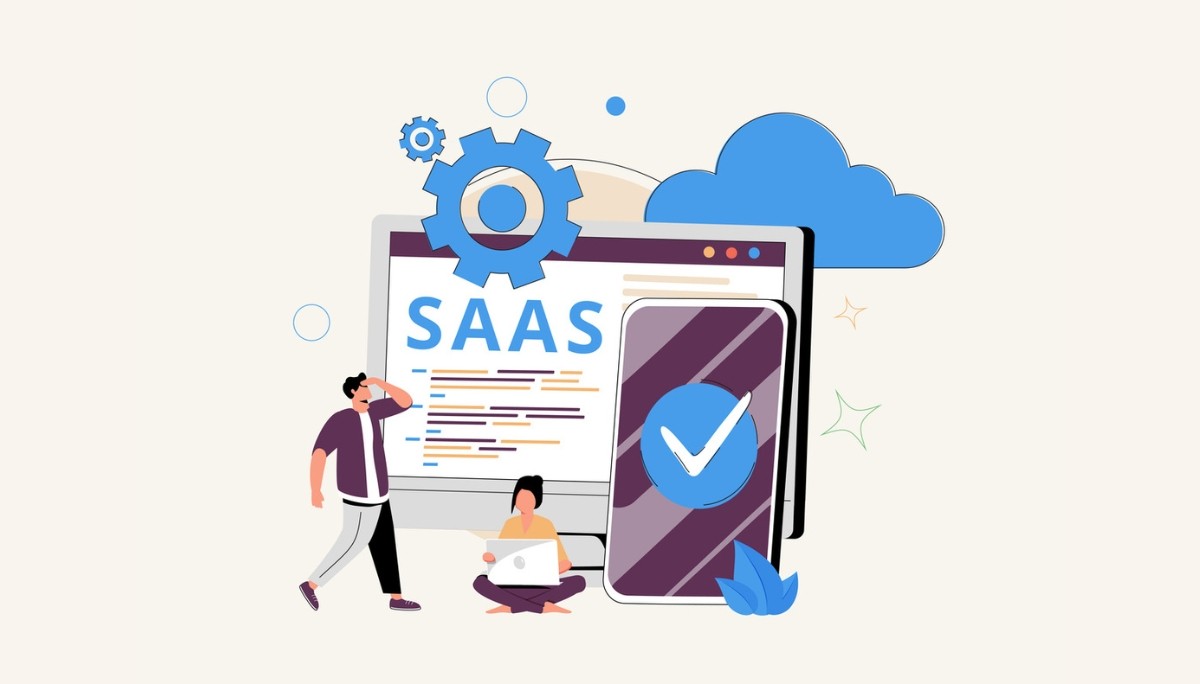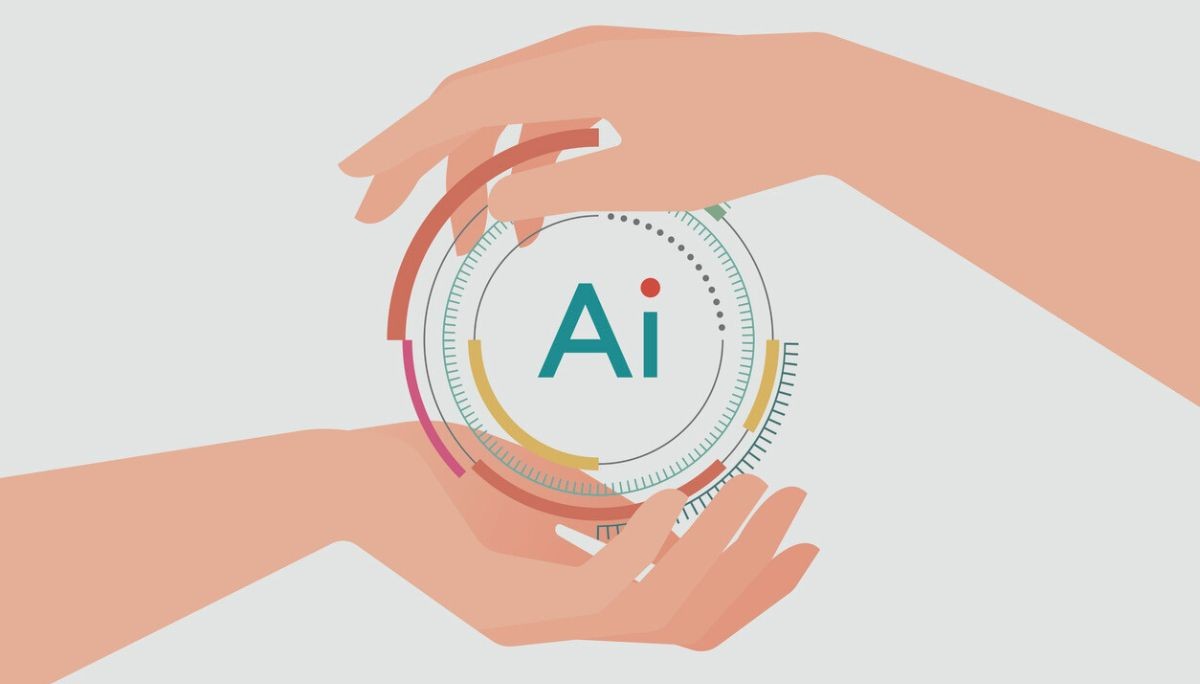9 Real-World Problems AI Engineers Are Solving Today
By
Ethan Fahey
•
Jul 18, 2025
In 2025, artificial intelligence has moved from experimental technology to business-critical infrastructure. Yet despite massive investments and soaring expectations, an estimated 80% of AI projects fail to reach production. The primary culprit? Complex AI engineering problems that go far beyond writing algorithms and training models.
AI engineering represents a unique discipline that combines traditional software engineering with data science, machine learning expertise, and ethical governance. Unlike conventional software development with predictable inputs and outputs, AI systems must handle uncertainty, learn from data, and adapt to changing environments while maintaining reliability at scale.
For startup founders, CTOs, and recruiters building technical teams, understanding these hurdles is key to making smart hiring decisions and driving real business value. Engineers who can navigate these complexities are in incredibly high demand.
That’s where Fonzi AI comes in. Fonzi helps hiring teams pinpoint elite AI engineering talent by matching candidates not just on skills, but on real-world problem-solving ability, exactly what’s needed to overcome the kinds of challenges outlined in this article. Whether you’re scaling a data science team or hiring your first ML engineer, Fonzi AI makes the process faster, smarter, and more aligned with your business goals.
Key Takeaways
Most AI projects still fail to launch – Despite growing investments, around 80% of AI initiatives never make it to production due to complex engineering challenges, not just bad models.
AI engineering is a hybrid discipline – Success in AI requires more than coding. It demands a mix of software engineering, machine learning, data handling, and ethical design to build systems that can adapt and scale reliably.
AI-ready engineers are rare and valuable – Companies need talent who can solve real-world, ambiguous problems, not just check boxes on a resume. This makes strong AI engineers some of the most in-demand hires in tech.
Fonzi AI helps teams hire the right talent, fast – Fonzi connects companies with vetted AI engineers who’ve demonstrated real-world problem-solving ability, streamlining the hiring process for high-impact technical roles.
Understanding AI Engineering Problems

AI engineering problems differ fundamentally from traditional software engineering challenges. While conventional systems rely on deterministic algorithms with predictable workflows, AI systems must integrate learning, reasoning, problem solving, perception, and language understanding into complex systems that operate under uncertainty.
The scope of these engineering problems extends across the entire AI lifecycle, from data collection and model development to deployment and continuous monitoring. Each phase presents unique challenges that require specialized expertise and innovative problem-solving skills.
Modern AI systems must seamlessly integrate with existing production environments, handle massive data volumes, and adapt to changing requirements while maintaining performance, reliability, and compliance with evolving regulations. This complexity makes AI engineering one of the most demanding fields in technology today.
The business impact of these challenges cannot be overstated. Organizations that successfully navigate ai engineering problems gain competitive advantages through improved efficiency, better decision making, and innovative products. However, those who underestimate these challenges face project failures, regulatory violations, and significant financial losses.
Data Quality and Management Challenges
Poor data quality remains the leading cause of AI project failures, creating fundamental engineering problems that affect every aspect of system performance. Unlike traditional software that processes well-defined inputs, AI systems depend entirely on the quality, completeness, and relevance of their training data.
Data silos present another critical challenge in large organizations. When datasets remain isolated across departments, AI engineers cannot access the comprehensive, diverse data needed to build robust models. This fragmentation leads to an incomplete understanding of business processes and limits model accuracy in real-world scenarios.
Insufficient dataset size and diversity create particular problems in specialized domains like medical diagnostics or autonomous vehicles, where edge cases are critical but rare. Engineers must develop creative solutions to augment limited datasets while maintaining statistical validity and avoiding overfitting.
Data drift represents an ongoing AI engineering problem that affects deployed systems over time. As real-world conditions change, the data distribution models encountered in production diverge from their training data, causing performance degradation. Detecting and addressing this drift requires sophisticated monitoring systems and retraining processes.
Privacy regulations like GDPR and HIPAA add another layer of complexity to data management. Engineers must implement privacy-preserving techniques while maintaining model performance, often requiring advanced methods like federated learning or differential privacy.
Model Development and Deployment Issues

Overfitting remains one of the most persistent engineering problems in AI development. Models that perform excellently on training data often fail dramatically in production environments, especially deep learning systems with millions of parameters. This challenge requires extensive experience with regularization techniques, cross-validation strategies, and robust testing methodologies.
Model interpretability presents critical challenges in regulated industries where transparency is mandatory. The “black box” nature of many AI systems conflicts with legal requirements for explainable decision making, particularly in healthcare and finance. Engineers must balance model performance with interpretability requirements, often sacrificing accuracy for compliance.
Version control in AI projects involves far more complexity than traditional software development. Engineers must track not only code changes but also data versions, model weights, hyperparameters, and experiment results. Without robust systems for managing these components, teams risk deploying outdated or faulty models.
Integration complexity multiplies when deploying models into existing production systems. AI models require specialized serving infrastructure, real-time data pipelines, and monitoring capabilities that traditional systems weren’t designed to support. This integration often involves extensive experience with containerization, orchestration, and microservices architectures.
Scalability bottlenecks emerge during high-traffic scenarios when models must serve thousands of requests per second. Engineers must design distributed serving architectures that maintain low latency while handling variable loads, often requiring expertise in load balancing, caching strategies, and horizontal scaling techniques.
Infrastructure and Performance Problems
Computational resource limitations create significant barriers for organizations attempting to implement AI solutions. Training modern deep learning models requires substantial GPU or TPU resources that can strain budgets and limit experimentation speed. Engineers must optimize resource utilization while balancing training time with model performance.
Latency requirements often conflict with model complexity, creating difficult trade-offs for engineers. Real-time applications like fraud detection or autonomous vehicle systems demand sub-millisecond response times, but complex models that achieve high accuracy may be too slow for production use. This challenge requires expertise in model optimization, quantization, and edge deployment strategies.
Cost optimization becomes critical as organizations scale their AI operations. Cloud computing expenses can quickly spiral out of control without careful resource management and optimization. Engineers must understand the economics of different deployment options and implement cost-effective solutions that maintain performance standards.
Legacy system integration presents unique challenges when implementing AI in established organizations. Existing infrastructure may lack support for modern data formats, APIs, or serving platforms required by AI systems. Engineers must develop bridge solutions that connect new AI capabilities with legacy systems without disrupting business operations.
The choice between cloud and on-premise deployment involves complex trade-offs that engineers must evaluate carefully. Cloud solutions offer scalability and managed services, but can incur high operational costs. On-premise deployment may reduce long-term costs but requires significant infrastructure investment and maintenance expertise.
Ethical and Bias-Related Challenges

Algorithmic bias represents one of the most serious AI engineering problems, with documented cases of unfair outcomes in hiring, lending, and criminal justice applications. Engineers must implement bias detection and mitigation strategies throughout the development process, requiring a deep understanding of both technical methods and societal implications.
Lack of transparency in AI decision-making processes undermines user trust and complicates regulatory compliance. Engineers must develop explainable AI techniques that provide meaningful insights into model behavior without compromising performance or revealing proprietary information.
Privacy concerns intensify when AI systems process personal or sensitive data for training and inference. Engineers must implement privacy-preserving technologies while maintaining model accuracy, often requiring expertise in cryptographic techniques and distributed learning approaches.
Regulatory compliance varies significantly across jurisdictions and industries, creating complex requirements for AI systems. Engineers must stay current with evolving regulations and implement flexible architectures that can adapt to changing compliance requirements without major system redesigns.
Accountability challenges arise when AI systems make decisions that cause harm or generate incorrect results. Engineers must design systems with appropriate logging, auditing, and rollback capabilities that enable investigation and remediation of problematic decisions.
Team and Skills-Related Problems
The shortage of qualified AI engineers represents a critical bottleneck for organizations implementing AI solutions. Demand for professionals with expertise in machine learning, distributed systems, and production deployment far exceeds supply, making recruitment and retention major challenges.
Communication gaps between technical teams and business stakeholders often lead to misaligned objectives and failed projects. Engineers must develop the ability to translate complex technical concepts into business terms while understanding domain-specific requirements and constraints.
Lack of domain expertise in AI teams can result in models that don’t reflect real-world constraints or business logic. Successful AI implementation requires engineers who understand not just the technology but also the specific industry context and operational requirements.
The rapid pace of technological change in AI requires continuous learning and skill development. Engineers must stay current with new frameworks, architectures, and best practices while maintaining expertise in fundamental concepts and proven methodologies.
Collaboration challenges between data scientists, software engineers, and product teams can slow development and reduce solution quality. Organizations need engineers who can bridge these disciplines and facilitate effective cross-functional teamwork.
9 Real-World Problems AI Engineers Are Solving Today
Problem | Industry | Technical Challenge | Business Impact |
Medical Image Analysis | Healthcare | Training models to detect diseases from X-rays, MRIs with limited labeled data | Faster diagnosis, reduced healthcare costs, improved patient outcomes |
Real-time Fraud Detection | Financial Services | Processing millions of transactions with sub-second latency requirements | Prevented financial losses, enhanced customer trust, regulatory compliance |
Personalized Recommendations | E-commerce/Media | Handling billions of user interactions while avoiding filter bubbles | Increased revenue, improved user engagement, competitive advantage |
Autonomous Vehicle Navigation | Transportation | Fusing sensor data for real-time decision making in safety-critical scenarios | Enhanced safety, reduced accidents, new business models |
Natural Language Processing | Customer Service | Understanding context and intent in multi-turn conversations | Reduced operational costs, improved customer satisfaction, 24/7 availability |
Predictive Maintenance | Manufacturing | Analyzing sensor data to predict equipment failures before they occur | Reduced downtime, lower maintenance costs, improved efficiency |
Supply Chain Optimization | Logistics | Coordinating complex networks with uncertain demand and capacity constraints | Cost reduction, improved delivery times, enhanced resilience |
Climate Modeling | Environmental Science | Processing massive datasets to understand climate patterns and predict changes | Better policy decisions, risk assessment, environmental protection |
Drug Discovery | Pharmaceuticals | Identifying promising molecular compounds from vast chemical spaces | Accelerated research, reduced development costs, new treatments |
These nine problems represent the cutting edge of AI engineering, where technical excellence meets real-world impact. Each requires specialized expertise, innovative problem-solving approaches, and a deep understanding of both technical and business constraints.
Engineers working on these challenges must combine multiple disciplines: machine learning theory, distributed systems engineering, data management, and domain expertise. They must also navigate ethical considerations, regulatory requirements, and business objectives while maintaining system reliability and performance.
The complexity of these problems explains why elite AI engineers are in such high demand. Organizations that can attract and retain top talent in this field gain significant competitive advantages through successful AI implementations.

Strategic Solutions for AI Engineering Problems
Implementing robust data governance frameworks represents a foundational solution for many AI engineering problems. Organizations must establish clear data quality standards, automated validation processes, and comprehensive lineage tracking to ensure reliable model inputs. This systematic approach reduces the risk of poor model performance and enables faster debugging when issues arise.
MLOps practices extend traditional DevOps methodologies to address the unique challenges of AI systems. Successful implementation involves automated testing, model versioning, continuous integration, and monitoring systems that detect performance degradation. These practices enable teams to deploy models confidently and maintain them effectively over time.
Transfer learning and pre-trained models offer powerful solutions to data scarcity and computational resource constraints. By leveraging models trained on large datasets, engineers can achieve high performance with limited domain-specific data while reducing training time and costs. This approach democratizes access to state-of-the-art AI capabilities.
Establishing clear ethical guidelines and bias detection protocols helps organizations navigate the complex landscape of responsible AI development. Regular auditing processes, diverse development teams, and stakeholder engagement ensure that AI systems serve all users fairly and maintain public trust.
Investment in team training and cross-functional collaboration tools addresses the skills gap and communication challenges that plague many AI projects. Organizations that prioritize continuous learning and knowledge sharing build more effective teams and deliver better solutions.
Best Practices for Problem Prevention
Early problem identification through comprehensive requirement analysis and stakeholder engagement prevents many common AI engineering problems. Teams that invest time in understanding business objectives, technical constraints, and regulatory requirements from the start avoid costly redesigns and failed deployments.
Iterative development approaches with frequent testing and validation cycles enable teams to catch issues early and adapt to changing requirements. Agile methodologies, combined with continuous integration practices, help maintain momentum while ensuring quality standards.
Documentation standards ensure knowledge transfer and system maintainability as teams evolve and projects scale. Well-documented code, architecture decisions, and operational procedures reduce the risk of knowledge loss and enable faster onboarding of new team members.
Monitoring and alerting systems provide proactive issue detection in production environments. Real-time performance metrics, data quality checks, and automated anomaly detection enable teams to respond quickly to problems before they impact users or business operations.
Regular model retraining schedules address data drift and maintain model accuracy in dynamic environments. Automated retraining pipelines with appropriate validation checks ensure that models remain effective as conditions change.
The Future of AI Engineering
As artificial intelligence continues to evolve, the complexity of AI engineering problems will only increase. Organizations that invest in understanding these challenges and building teams capable of solving them will gain significant competitive advantages in an AI-driven economy.
The engineers who can navigate the intersection of technical excellence, business value, and ethical responsibility represent the future of technology leadership. These professionals don’t just implement AI solutions; they shape how artificial intelligence transforms industries and society.
Success in AI engineering requires more than technical skills; it demands the ability to think systematically about complex problems, collaborate across disciplines, and adapt to rapidly changing technology landscapes. The most valuable engineers are those who can combine deep technical expertise with strategic thinking and practical implementation experience.
For organizations ready to harness the power of AI, the first step is building teams with the right expertise. The AI engineering problems outlined in this analysis require specialists who understand not just the theory but the practical challenges of delivering AI solutions that work reliably in production environments.
Ready to find elite AI engineers who can solve these complex problems and drive your organization’s AI initiatives forward? Discover how Fonzi’s intelligent matching platform connects you with the world’s top AI engineering talent, ensuring your team has the expertise needed to navigate today’s most challenging AI engineering problems and tomorrow’s emerging opportunities.
Introducing Fonzi: Your Solution to AI Engineering Talent Challenges
While understanding these AI engineering problems is crucial, solving them requires access to elite engineering talent with the specific expertise needed for AI projects. This is where Fonzi transforms the traditional hiring process for technical leaders.
Fonzi is a revolutionary AI-powered platform that connects startups, scale-ups, and enterprises with the world’s top AI engineers. Unlike traditional recruiting methods that rely on keyword matching and generic assessments, Fonzi uses advanced algorithms to evaluate candidates’ actual problem-solving abilities and technical expertise in AI engineering.
The platform addresses the critical talent shortage by identifying engineers who possess the rare combination of machine learning expertise, software engineering skills, and real-world experience with production AI systems. Fonzi’s assessment process evaluates candidates on the exact types of problems outlined in this article, ensuring that matches have the skills needed to tackle complex AI engineering challenges.
For CTOs and technical hiring managers, Fonzi eliminates the uncertainty and lengthy process typically associated with AI talent acquisition. The platform’s intelligent matching system considers not just technical skills but also team dynamics, company culture, and project requirements to identify engineers who will thrive in specific environments.
Startup founders benefit from Fonzi’s ability to identify engineers who can wear multiple hats and solve diverse problems across the AI development lifecycle. The platform recognizes that early-stage companies need versatile engineers who can handle everything from data pipeline development to model deployment and monitoring.
AI team leads use Fonzi to find specialists who complement existing team capabilities and fill specific skill gaps. Whether the need is for expertise in computer vision, natural language processing, or MLOps, Fonzi’s network includes engineers with deep specialization in every area of AI engineering.




